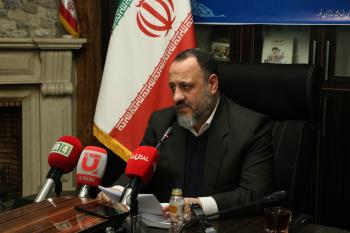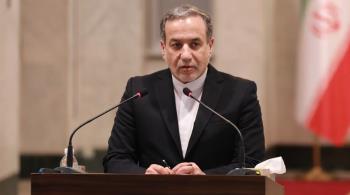Alwaght- For more than seven decades, the Jewish Agency for Israel has been proud of its role in bringing Jews from all over the world to the occupied Palestinian territories, but large-scale Israeli crises, especially the power struggle and the constant protests against the government's judicial overhaul, have slowed down the immigration to the occupied territories and on the other hand accelerated the reverse migration, triggering waves of concerns among the Tel Aviv officials.
In this connection, Israeli media talk about a considerable drop in the rate of emigration, or Aliyah as Jews call it, from North America, especially among the youths, amid decrease of the attraction factors. The Yedioth Ahronoth newspaper reported that the judicial overhaul tears apart the Israeli society and impacts all aspects of life not just inside the occupied territories.
The reason for the emigration decline, the newspaper reports, is that emigrants find it difficult to be recognized with Israel at this point of time and say that now is not the right time to migrate. Since the beginning of the year, only a third of the average number of young people who emigrated to Israel during the past decade have immigrated.
Nefesh B’Nefesh, an NGO advocating Aliyah from the US and Britain, holds that there is talk about instabilities in the occupied territories and, meanwhile, more Jews have said that they will never emigrate to them, and Israel is competing with other emigration destinations for the Jews. The organization added that the emigration to Israel has dropped and by end of 2023, the number emigrants is expected to decrease to 3,000, 10 to 15 percent less than the years before.
Also, according to official information published by the Jewish Agency, in the first half of this year, 29,293 immigrants entered Israel, down 20 percent from the same period last year. According to the agency, 78 percent of new immigrants arrived from Russia.
The decrease in the rate of youth migration to the occupied territories is not the only worrisome matter, and in addition, financial aids to the Israeli government have also decreased. A sponsor who identifies himself as a big Zionist told the Yedioth Ahronoth that as a result of this situation, he will suspend the funds he promised to pay.
Earlier, some Israeli investors and analysts had warned that the Israeli economy is likely to face growth rating drop, decrease in the foreign investment, and weaker technology sector performance as tensions over judicial overhaul continue.
Israeli media announced in July that the International Development Association, a bloc including major rating agencies, reported that the controversy over the judicial reforms of the Israeli regime may put its economic growth at stake. This warning is issued as economic situation has a direct relationship with the rate of emigration to the occupied territories as the change in the number of emigrants over the years is related to the economic situation of Israel compared to the country of origin of the Jewish emigrants.
Emigration, the vital Israeli artery
It is obvious that for its survival and occupation, Israel needs Jewish population, so that the hardline officials can advance settlement and expansionism in the West Bank and consequently Judaize Al-Quds (Jerusalem) under the excuse of increase of the population of the occupied territories. Also, driven by the huge wealth of the Jewish capitalists, the Israeli regime tries to expand its economic infrastructure and settle a large part of its problems through attracting foreign capital and, thus, make the occupied territories attractive for emigrants especially from Africa who seek an affluent life. This practice, in turn, meets the Israeli need for labor force and at the same time decreases the need for Palestinian labor force and as a result facilitates at a lower cost the policy of migration of Arabs who have a major share in provision of the labor force in industrial and service sectors.
Currently, about 20 percent of Israeli population is made up of religious groups, including the Haredis, who have no share in the labor market and the production process of this regime, and therefore the burden of underperformance of this large population must be borne by other Jews, and for this reason, new emigrants must be absorbed to avoid economic failure.
Tel Aviv leaders need more emigrants in order to attract more capital, and the larger the population, the more they can pressure Jewish investors to inject money into the occupied territories. The injection of more capital will open the hands of extremists to implement expansionist plans in the West Bank.
It should be taken into consideration that a large number of population in the West Bank settlements, which have the lowest security degree, are poor and underprivileged settlers, and the wealthy Jews live in large cities like Tel Aviv and Haifa, and therefore, continuation of settlement construction depends on the economic situation.
About 9.6 million live in the occupied territories, with about 7.8 are Zionists, and Tel Aviv leaders push for more emigrants to tips the scales in favor of the Jews and against the Palestinians. A bigger Jewish population will allow the Israeli leaders to have stronger claims over Palestinian lands.
In the military area, there is such an equation and providing human sources of the military as the main power factor in any country has always been a Tel Aviv obsession, and emigrants account for the most important provider of the human resources. For this purpose, the Israeli army has set a program called the Garin Lotam recruitment program in the past years, according to which Jewish emigrants to Israel, while serving in the army for two years, can receive welfare and housing benefits in addition to high payment. However, despite special support programs, such as monthly per capita payments, discounts on public services, insurance and housing, which the government provides them, the emigrants are still not very willing to stay in the occupied territories, and half of them leave Israel as soon as their military service term ends, and the remaining stay there only for a short time.
Given this level of dependence of the Israeli vital arteries to the emigration factor, Israeli circles have already voiced their concerns about a 42-percent drop in the immigration in recent years, to an extent that Israeli immigration minister visited France in April in a bid to encourage Aliyah.
Why is emigration slowing down?
In the first decades of the establishment of the Israeli regime, the authorities considered incentives to attract emigrants from all over the world and increase their population. Job opportunities and giving land led to hundreds of thousands of people moving to the occupied Palestine. But evidence shows that in the last two decades, there have been no incentives and less Jews than before tend to immigrate to the so-called promised land.
Uri Carmel, the CEO of Eretz-Ir, an NGO focusing on providing job opportunities for immigrants and employment in Negev, believes that Israel is not ready to absorb a large number of immigrants due to the escalation of security tensions and internal crises following reforms in the judicial system. These estimates are sad for Israel, because there are no guarantees of providing for their their future.
The Zionists mainly immigrate to the occupied territories for better living conditions since security and welfare are greatly important for them. However, after years of Jewish Agency’s allurement about a carefree life in the promised land, now various crises are arising and immigrants see the demise of ideal of Zion in front of their eyes.
Growing reverse migration
Deline in the immigration to the occupied territories is not the only concern of the Israeli authorities, but the worse challenge is the reverse migration from the occupied territories that over the past decade has taken a steep slope. According to figures, over 756,000 Jews up to 2020 migrated from the occupied territories driven by various motivations like worsening economic conditions, inequality and disappointment with peace with the Palestinians and also intensification of tensions with Palestinian resistance groups.
Not only has this process not slowed down, but also it is still on the rise, and according to surveys conducted in recent months, more than 60 percent of Zionists said that they are thinking about migration. This is mostly in response to the controversial policies of the radical government of Benjamin Netanyahu and his cabal that have exacerbated political, social and even economic crises.
According to a poll by Israeli Kan news network, over 25 percent of the Israelis above 18 seriously consider migration from the occupied territories, as 6 percent have already started their migration process driven by current critical circumstances. Influence of the Haredi parties in the government structure and also the judiciary overhaul that the Israelis call a coup against democracy are catalysts to reverse migration.
Although Tel Aviv set a two-decade high record by attracting 70,000 new immigrants in 2022, the rise of the far right undid this gain. Peace Now spokesman Adam Clare believes that past reverse migration arose from social and economic factors, high unemployment rates, and difficult living conditions compared to other countries, but now lack of prospects of a stable Israeli government with the assumption of power by the hardliners and their push to impair the judiciary and democracy pillars and to replace it with dictatorship motivate reverse migration of the younger generation, academics, scientific people and capitalists.
Jewish migration from Israel is nothing new and since its foundation, reverse migration has always existed, and 10 percent of migrants left the occupied territories from 1948 to 1950. This trend triggered strict visa laws and migration applications are mostly rejected. But now and as a result of widening social and political gaps caused by actions of the hardliners of the cabinet, reverse immigration has intensified.
The risks arising from judicial reform-inflamed social and political tensions that will negatively impact Israeli economy and security have put the Israelis in a tight spot. They are extremely concerned amid repeated warnings by top Tel Aviv officials about a civil war, and this works as a driving force for reverse migration that is expected to gain momentum in the future with the continuation of the current critical conditions.



























